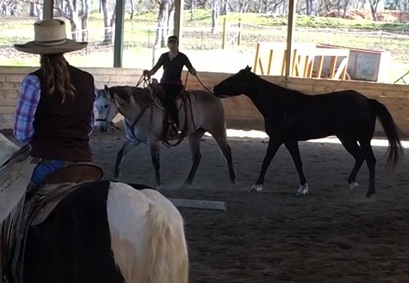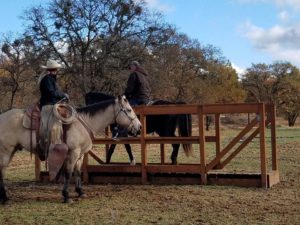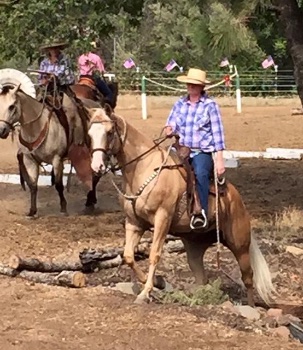RIDER TRAINING/LESSONS

“In the five years I’ve known Kim, I’ve been extremely impressed with her level of integrity in dealing with both horses and people.” -Alexandria
Group lessons: Kim utilizes the extra energy that comes from putting horses and riders together to enhance the learning process. Many people are visual learners, so Kim will often ask a student to demonstrate a particular exercise or issue. Group lessons help the horse as well, as the horse become exposed to other horses and situations.
Private lessons: Students learn best when they are relaxed and feeling confident. With over twenty years of teaching experience, Kim is able to focus directly on a rider’s particular need at the time while continuing to find ways to make sure a rider doesn’t feel pressured.
“If I can get them comfortable, a rider can overcome his or her own brace or tightness. When a rider gets comfortable, a lot to things fall into place.”
TEACHING PHILOSOPHY
For over two decades, Kim has been teaching students and horses with her unique combination of intelligence, kindness and skill.
For the rider:
• Working with students at their own level. Whether a student has been riding for a few months or for many years, Kim is able to assess what is needed and to work from there.
 • A willingness to learn. One of the biggest challenges in teaching students is when they put up their own blocks to learning. Being open is the key, so come to a lesson with an open mind and be willing to try out something new. Kim suggests a student, “Try it out in the lesson, be open, even if you go home and decide not to use what I’ve taught.”
• A willingness to learn. One of the biggest challenges in teaching students is when they put up their own blocks to learning. Being open is the key, so come to a lesson with an open mind and be willing to try out something new. Kim suggests a student, “Try it out in the lesson, be open, even if you go home and decide not to use what I’ve taught.”
• Prioritize what to teach. Kim knows that students can’t learn if they feel overwhelmed by too much information, so she will access what is most needed in the moment. “I never throw a bunch of stuff at a student. I figure out what they most need in the moment and work with that.”
• Keeping the rider safe. Teaching people to be safe is at the foundation of Kim’s teaching style. “Everyone is at a different level, and I have to know where and how much I can push the person to increase his or her knowledge, while also keeping the person safe. It’s a matter of stretching the student’s comfort zone a little bit at a time.”
• Breaking complex movements down into small steps. Kim’s unique way of teaching helps students progress by breaking new concepts and movements into simple, easy to understand movements, then putting them together into a flow. This enables both horse and rider to learn complex maneuvers more quickly and correctly. If a student gets stuck, breaking it down this way can reveal a small step that may be missing.
For the horse:
• Make it a good deal for the horse. “One of my major goals in teaching and training is to help the horse have a happy life. I want to make it as good a deal for the horse as possible because I love them, and the only way I know how to do that is to help the person, the rider, understand why a horse does what he or she does.”
• Teach the student how to support the horse. “I think as riders we need to try really hard to be strong in the spots were our horses are weak. For example, if a horse has an issue going too fast and we want to slow them down, we need to try really hard to be slow in our body and our in our way of asking. If we look at it that way we’re not getting after our horse or punishing our horse for his weak spots. Rather we are trying to be a source of support and help them through the issue.”
• Help the student see things from the horse’s perspective. Kim trains students to see things through their horses’ eyes. When a student can see things from the horse’s point of view, he or she will come to understand that horses don’t do what they do to be mean or to ‘get’ the person. A horse does what it was taught to do, right or wrong. It might be that the rider is inadvertently teaching the horse to do the wrong thing, or the horse might have been taught it by someone else. Either way, Kim teaches her students how to communicate with their horses in order to get the response they want.
*All deposits and final payments are non-refundable and non-transferable to another clinic.
No stallions. No video/audio taping allowed.
We love dogs, but for insurance purposes, and as a courtesy to all who attend, please leave your dogs at home.
